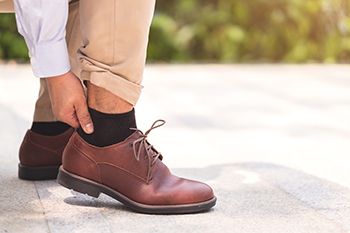 Due to the nature of their employment, some individuals may be more at risk of developing various foot conditions. Cashiers are an example of one such employee. Since cashiers spend most of the workday standing on their feet, they are at an increased risk of developing some kind of foot condition. There are many ways that cashiers might be able to mitigate this risk. First, and most importantly, cashiers can see a podiatrist for individualized, high-quality care for their foot and ankle needs. Second, cashiers should distribute their weight evenly throughout their feet. This means not putting more weight on one foot or leg than another. Third, the cashier might consider breaking up the day by alternating between sitting, walking, and standing whenever possible. If you are a cashier and are concerned about maintaining the health of the feet, it is suggested that you contact a podiatrist today.
Due to the nature of their employment, some individuals may be more at risk of developing various foot conditions. Cashiers are an example of one such employee. Since cashiers spend most of the workday standing on their feet, they are at an increased risk of developing some kind of foot condition. There are many ways that cashiers might be able to mitigate this risk. First, and most importantly, cashiers can see a podiatrist for individualized, high-quality care for their foot and ankle needs. Second, cashiers should distribute their weight evenly throughout their feet. This means not putting more weight on one foot or leg than another. Third, the cashier might consider breaking up the day by alternating between sitting, walking, and standing whenever possible. If you are a cashier and are concerned about maintaining the health of the feet, it is suggested that you contact a podiatrist today.
While working on the feet, it is important to take the proper care of them. For more information about working on your feet, contact Dr. Richard DiMario from Maine. Our doctor will treat your foot and ankle needs.
Working on Your Feet
Standing on your feet for long periods of time can cause stress and pain in your feet. Your whole body may experience change in terms of posture, back pain, bunions, callouses and or plantar warts. There are ways to avoid these conditions with proper foot care, smart choices and correct posture.
Positive Changes
Negative heeled shoe – Choosing this shoe type places the heel slightly lower than the ball of the foot. These are great for overall foot health. Find shoes that fit you correctly.
Go barefoot – Our feet were not designed to be enclosed for all hours of the day. Try to periodically expose your feet to air.
Eliminate Pain
Foot Exercises – Performing simple exercises, incorporating yoga and doing stretches are beneficial. This will allow increased blood flow to the area and muscles of the foot.
Achilles tendon – Stretching the foot out flat on the floor will relax the calf muscles and tendon. These exercises can be performed almost anywhere. Make sure you add these exercises to your daily regimen.
With a little bit of this information and knowing more about foot health, you will notice changes. Foot stretches and proper footwear will help with pain and prevent further issues.
If you have any questions please feel free to contact our office located in York, ME . We offer the newest diagnostic and treatment technologies for all your foot and ankle needs.
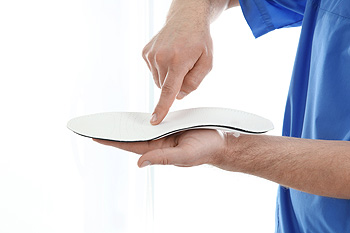
Another name for orthotics is insoles. The difference between the two can be that orthotics can be custom-made to fit an individual's foot, which can help to normalize abnormal foot structure. Patients who have flat feet may benefit from wearing orthotics which may help to reduce existing pain. They can gradually realign the foot and improve overall foot mechanics. The type of orthotics that are suggested often depends on the reason they are needed, which may come from having endured an injury or from an ongoing foot condition. The orthotics are sized by taking an impression of the foot, which is commonly done by having a plastic mold developed or by having a 3-D laser scan performed. Some of the foot conditions that can possibly be improved by wearing orthotics include bunions, flat feet, high arches, or rheumatoid arthritis. If you have foot pain, it is suggested that you consult with a podiatrist who can create custom orthotics if this is the correct choice for you.
If you are having discomfort in your feet and would like to try orthotics, contact Dr. Richard DiMario from Maine. Our doctor can provide the care you need to keep you pain-free and on your feet.
What Are Orthotics?
Orthotics are inserts you can place into your shoes to help with a variety of foot problems such as flat feet or foot pain. Orthotics provide relief and comfort for minor foot and heel pain but can’t correct serious biomechanical problems in your feet.
Over-the-Counter Inserts
Orthotics come in a wide variety of over-the-counter inserts that are used to treat foot pain, heel pain, and minor problems. For example, arch supports can be inserted into your shoes to help correct overarched or flat feet, while gel insoles are often used because they provide comfort and relief from foot and heel pain by alleviating pressure.
Prescription Orthotics
If over-the-counter inserts don’t work for you or if you have a more severe foot concern, it is possible to have your podiatrist prescribe custom orthotics. These high-quality inserts are designed to treat problems such as abnormal motion, plantar fasciitis, and severe forms of heel pain. They can even be used to help patients suffering from diabetes by treating foot ulcers and painful calluses and are usually molded to your feet individually, which allows them to provide full support and comfort.
If you are experiencing minor to severe foot or heel pain, it’s recommended to speak with your podiatrist about the possibilities of using orthotics. A podiatrist can determine which type of orthotic is right for you and allow you to take the first steps towards being pain-free.
If you have any questions please contact our office located in York, ME . We offer the newest diagnostic and treatment technologies for all your foot and ankle needs.
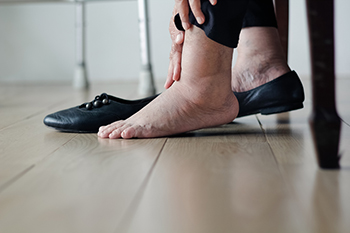
Many people deal with the discomfort of swollen feet, or edema, on a daily basis. It is typical among diabetics, pregnant women, and people with kidney or liver ailments. Certain medications, especially those connected to heart or circulation issues, also can contribute to edema. Swelling is caused by a buildup of fluid in the feet, ankles, and legs. It can be the result of sitting for too long on a flight, and wearing compression stockings is often recommended. Reducing salt intake is another way to counteract the effects of swollen feet. Wearing shoes that are specifically designed for people with edema is also a good idea. Among the qualities to look for in this type of footwear is extra width in shoes made from flexible, but durable, materials. Shoe inserts may also help alleviate pain when standing or walking. Velcro fasteners are desirable so when the feet are particularly bothersome or extra swollen, the width of the shoe can be adjusted. For more help with finding out why your feet are swelling and how to deal with it, please consult a podiatrist.
Swollen feet can be a sign of an underlying condition. If you have any concerns, contact Dr. Richard DiMario of Maine. Our doctor can provide the care you need to keep you pain-free and on your feet.
Swollen feet are a common ailment among pregnant women and people who stand or sit for extended periods. Aging may increase the possibility of swollen feet and patients who are obese often notice when their feet are swelling too. There may be medical reasons why swollen feet occur:
Swollen feet can also be caused by bone and tendon conditions, including fractures, arthritis, and tendinitis. Additionally, there may be skin and toenail conditions and an infection may cause the feet to swell. Patients who take medicine to treat high blood pressure may be prone to getting swollen feet.
Many patients elevate their feet to help relieve the swelling and this is generally a temporary remedy. When a podiatrist is consulted the reason behind the swelling can be uncovered and subsequently treated.
If you have any questions please feel free to contact our office located in York, ME . We offer the newest diagnostic tools and technology to treat your foot and ankle needs.

A podiatrist’s job is to treat conditions of the feet and ankles. There are several years of mandatory school that must be obtained before the initials DPM can follow a students name. This is the abbreviation for Doctor of Podiatric Medicine, and the education begins with earning a bachelor’s degree. The courses that are taken will include physiology, anatomy, and patient care instruction. This is followed by completing a podiatric medicine program, which generally takes approximately four years. Attending a podiatric residency is the next step to take, which is done in a hospital or clinic. Some of the foot conditions that podiatrists treat are bunions, hammertoe, and athlete’s foot. Diabetic foot ulcers are treated by a podiatrist, in addition to painful conditions such as plantar fasciitis and heel spurs. If you are interested in pursuing a career in podiatry, it is suggested that you speak to a podiatrist who can help you to determine if this is the right path for you.
If you are experiencing pain in the feet or ankles, don’t join the stubborn majority refusing treatment. Feel free to contact Dr. Richard DiMario from Maine. Our doctor can provide the care you need to keep you pain-free and on your feet.
What Is a Podiatrist?
Someone would seek the care of a podiatrist if they have suffered a foot injury or have common foot ailments such as heal spurs, bunions, arch problems, deformities, ingrown toenails, corns, foot and ankle problems, etc.
Podiatric Treatment
A podiatrist will treat the problematic areas of the feet, ankle or lower leg by prescribing the following:
A common podiatric procedure a podiatrist will use is a scanner or force plate which will allow the podiatrist to know the designs of orthotics. Patients are then told to follow a series of tasks to complete the treatment. The computer will scan the foot a see which areas show weight distribution and pressure points. The podiatrist will read the analysis and then determine which treatment plans are available.
If you have any questions please feel free to contact our office located in York, ME . We offer the newest diagnostic and treatment technologies for all your foot and ankle needs.
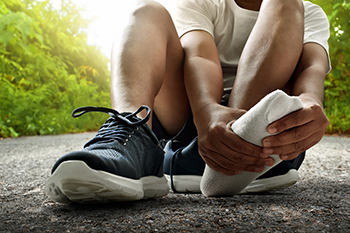
Research has shown that keeping the feet strong is the best way to reduce the chances of running injuries. Doing foot strengthening exercises can not only improve the health of your feet, it can also improve the effects that running can have on the rest of the body. The main objective of this type of exercise is to strengthen the arch and reduce pronation. One such exercise is called the short foot exercise. Start by sitting in a chair with one bare foot placed flat on the floor. Contract the muscles in the foot in a way that pulls the toes toward the body. This increases the gap between the arch of the foot and the floor, in effect, shortening the foot. Try to keep your heels and your toes touching the floor. When the foot is shortened as much as possible, let go and relax the foot. Complete 10 repetitions before switching to the other foot. Another exercise is to stand on the ball of one foot for 10 seconds, then alternate feet. Continue this process for 10 minutes. For more information on how to strengthen your feet, please consult a podiatrist.
All runners should take extra precaution when trying to avoid injury. If you have any concerns about your feet, contact Dr. Richard DiMario of Maine. Our doctor will treat your foot and ankle needs.
How to Prevent Running Injuries
There are a lot of mistakes a runner can make prior to a workout that can induce injury. A lot of athletes tend to overstretch before running, instead of saving those workouts for a post-run routine. Deep lunges and hand-to-toe hamstring pulls should be performed after a workout instead of during a warmup. Another common mistake is jumping into an intense routine before your body is physically prepared for it. You should try to ease your way into long-distance running instead of forcing yourself to rush into it.
More Tips for Preventing Injury
If you have any questions, please feel free to contact our office located in York, ME . We offer the newest diagnostic and treatment technologies for all your foot care needs.

Flat shoes are all too common among the general public. For example, canvas shoes and flip-flops are flat shoes that have next to no cushioning or support. Yet despite this, they can be exceedingly popular among many people. However, consistently wearing flat shoes can cause the feet a considerable amount of pain. As a general rule, someone who cares about the health of their feet should minimize the extent to which they are wearing shoes with no arch support. Additionally, shoes that have extremely thin soles are generally not a wise decision to make if you are struggling with foot pain of any kind. If you currently have foot pain or are wearing flat shoes, contact a podiatrist today to schedule an appointment. This foot specialist will be able to help you address any problems you are having. A podiatrist can answer your questions or treat any foot conditions you may have.
Foot Pain
Foot pain can be extremely painful and debilitating. If you have a foot pain, consult with Dr. Richard DiMario from Maine. Our doctor will assess your condition and provide you with quality foot and ankle treatment.
Causes
Foot pain is a very broad condition that could be caused by one or more ailments. The most common include:
Diagnosis
To figure out the cause of foot pain, podiatrists utilize several different methods. This can range from simple visual inspections and sensation tests to X-rays and MRI scans. Prior medical history, family medical history, and any recent physical traumatic events will all be taken into consideration for a proper diagnosis.
Treatment
Treatment depends upon the cause of the foot pain. Whether it is resting, staying off the foot, or having surgery; podiatrists have a number of treatment options available for foot pain.
If you have any questions, please feel free to contact our office located in York, ME . We offer the newest diagnostic and treatment technologies for all your foot care needs.

Athlete’s foot is a fairly well-known foot condition that occurs when a fungal infection is spread, often in warm and moist environments. As a result, the athlete’s foot rash can develop on the feet, especially in between the toes. The athlete’s foot rash is distinctive for many different reasons. First, the rash will usually be discolored with a red color. Additionally, the rash will also appear to be somewhat moist in texture. The rash may also be accompanied by a series of small blisters that can spread across the feet. The infection from athlete’s feet may also even extend beyond the toes on the feet, reaching the soles of the feet and the toenails. If you are someone that is interested in learning more about athlete’s foot or believe that you may have the condition yourself, contact a podiatrist today for more information.
Athlete’s foot is an inconvenient condition that can be easily reduced with the proper treatment. If you have any concerns about your feet and ankles, contact Dr. Richard DiMario from Maine. Our doctor will treat your foot and ankle needs.
Athlete’s Foot: The Sole Story
Athlete's foot, also known as tinea pedis, can be an extremely contagious foot infection. It is commonly contracted in public changing areas and bathrooms, dormitory style living quarters, around locker rooms and public swimming pools, or anywhere your feet often come into contact with other people.
Solutions to Combat Athlete’s Foot
Athlete’s foot can cause many irritating symptoms such as dry and flaking skin, itching, and redness. Some more severe symptoms can include bleeding and cracked skin, intense itching and burning, and even pain when walking. In the worst cases, Athlete’s foot can cause blistering as well. Speak to your podiatrist for a better understanding of the different causes of Athlete’s foot, as well as help in determining which treatment options are best for you.
If you have any questions please feel free to contact our office located in York, ME . We offer the newest diagnostic and treatment technologies for all your foot and ankle needs.
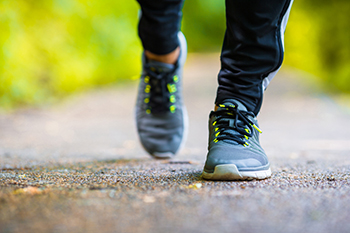
A well-fitting shoe is the most important consideration when selecting shoes for an aging foot. Seniors should be particularly mindful of having their feet measured when they buy shoes as the foot changes as aging occurs. The arch can fall, and the foot can become longer and wider. Issues with the forefoot are common in seniors and properly fit shoes, with sufficient room in the toe box, will help in preventing pain in this area as well as problems with toenails and bunions. Shoe quality varies by brand and just because a shoe fits in one size with one brand or model does not mean it will when considering another brand or model. Visiting a podiatrist is helpful in understanding the right shoes for your feet as you age.
Proper foot care is something many older adults forget to consider. If you have any concerns about your feet and ankles, contact Dr. Richard DiMario from Maine. Our doctor can provide the care you need to keep you pain-free and on your feet.
The Elderly and Their Feet
As we age we start to notice many changes in our body, but the elder population may not notice them right away. Medical conditions may prevent the elderly to take notice of their foot health right away. Poor vision is a lead contributor to not taking action for the elderly.
Common Conditions
Susceptible Infections
Diabetes and poor circulation can cause general loss of sensitivity over the years, turning a simple cut into a serious issue.
If you have any questions please feel free to contact our office located in York, ME . We offer the newest diagnostic and treatment technologies for all your foot and ankle needs.
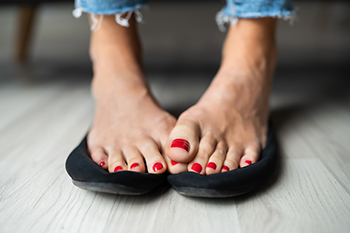
Sweaty feet can be a temporary problem caused by having your feet enclosed in shoes and socks all day, or from high temperatures. But if having sweaty feet is an everyday occurrence, the chances are that you have a condition known as hyperhidrosis. This condition is thought to be genetic in nature. Some people are born with overactive sweat glands, and the moisture produced goes well beyond sweating from hot weather, exercising, or stress. Several underlying health conditions and certain foods may also cause hyperhidrosis. In some cases of hyperhidrosis, bacteria forms around the feet, causing them to emit a foul odor. It is a good idea to use antibacterial soap regularly to keep the feet clean and healthy. Wearing moisture-wicking socks or open-toed shoes or sandals is a good way to keep your feet dry. A podiatrist can offer more advanced treatment options, including several prescribed antiperspirant medications. In extreme cases, surgery to block the nerve passageway that tells the feet to sweat can be performed. For more information, please contact a podiatrist.
If you are suffering from hyperhidrosis contact Dr. Richard DiMario of Maine. Our doctor can provide the care you need to attend to all of your foot and ankle needs.
Hyperhidrosis of the Feet
Hyperhidrosis is a rare disorder that can cause people to have excessive sweating of their feet. This can usually occur all on its own without rigorous activity involved. People who suffer from hyperhidrosis may also experience sweaty palms.
Although it is said that sweating is a healthy process meant to cool down the body temperature and to maintain a proper internal temperature, hyperhidrosis may prove to be a huge hindrance on a person’s everyday life.
Plantar hyperhidrosis is considered to be the main form of hyperhidrosis. Secondary hyperhidrosis can refer to sweating that occurs in areas other than the feet or hands and armpits. Often this may be a sign of it being related to another medical condition such as menopause, hyperthyroidism and even Parkinson’s disease.
In order to alleviate this condition, it is important to see your doctor so that they may prescribe the necessary medications so that you can begin to live a normal life again. If this is left untreated, it is said that it will persist throughout an individual’s life.
A last resort approach would be surgery, but it is best to speak with your doctor to find out what may be the best treatment for you.
If you have any questions please feel free to contact our office located in York, ME . We offer the newest diagnostic and treatment technologies for all your foot and ankle needs.